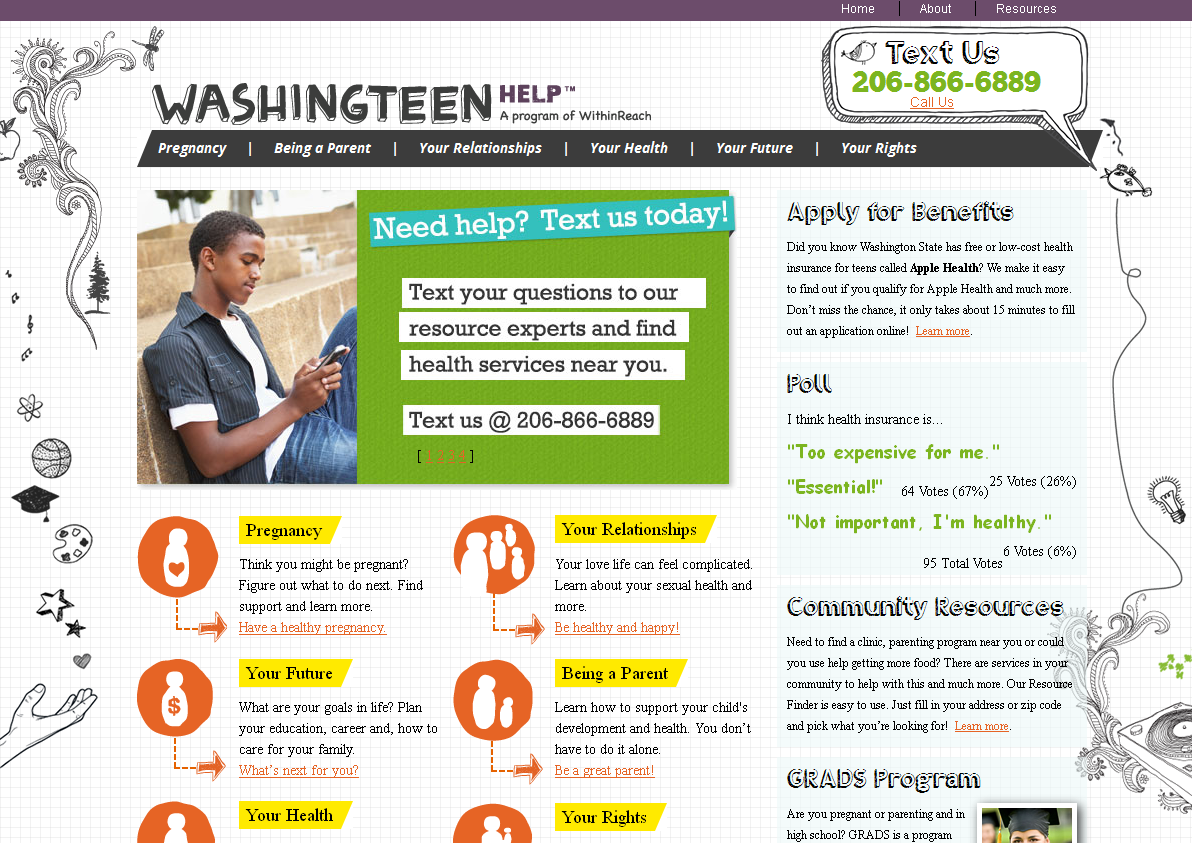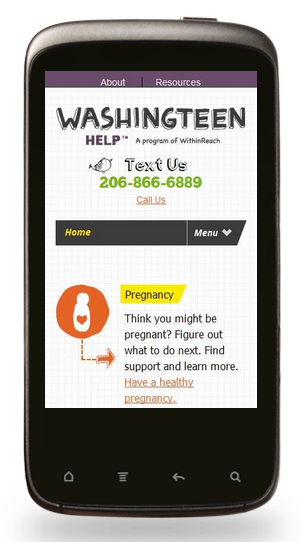
JoAnn Manke
Yesterday we heard from Julia Reich on why you should use responsive design. Today we hear from JoAnn Manke from WithinReach on how they used responsive design on their new website for teens.
Guest Post by JoAnn Manke from WithinReach
Our agency makes connections that families need to be healthy, and works to meet families where they are. We do this with traditional outreach such as meeting people out in the community, but we also rely on technology to reach people. This means staying on top of how people are using the internet to access information and meeting them “there”.
Confirming the Need for a Mobile Approach
Did you know that in 2014 more people will access the internet via mobile devices than from a desktop computer? A growing number of the low-income families we serve are already using their mobile phones as a primary point of internet access. We know that teens are high technology users, both of the internet and cell phones [95% of teens use the internet and 1 in 4 is a “cell-mostly” internet user according to Pew Internet]. This is a story about our successful technology-based approach to reaching teens to tell them about WithinReach’s new website, WashingteenHelp.org.
We had already developed an easy to use website for families to access resources, but we needed to make this information easily accessible and engaging for teens. Working with a partner, we surveyed teens across the state to find out what kind of information they needed and how they were accessing the internet. Our surveys confirmed national research showing that teens are very comfortable using the internet and interact with their phones a lot. Knowing that many of the teens we were trying to reach would be accessing the website using their mobile phone, we wanted to make sure the website could be easily viewed on mobile devices. Users won’t stay on a website that they can’t easily read or navigate on their phone.
But Which Mobile Approach Would Work Best?
Now that we’d made the decision to go “mobile-friendly,” we had to determine the best and most cost effective way for us to do that. Working through our options with our website developer ……1) create an entirely separate mobile website with a separate content management system, 2) modify the desktop version’s navigation (like using more and larger buttons), or 3) use something called “responsive design”.
We decided to opt for the middle ground of responsive design, which doesn’t require maintaining a separate content management system but does address design for a range of mobile devices. Responsive design fluidly adapts the website layout to any mobile device. I’m not a techie so I can’t tell you exactly how it works but in layman’s terms it condenses your site into an easy to view column (or columns if a larger mobile devices like a tablet is being used). We’re really happy with how it turned out.


People Are Using the Mobile Site
Whether you are launching a new site, re-designing or just want to make your site mobile-friendly there are options. More and more people are going to be looking at your website on a mobile device and they are going to be more engaged and stay longer if they can easily find the information they want.
Our website data shows that since launching Washingteenhelp.org more than 42% of our website traffic comes from mobile devices and we see this trend in our other agency website traffic also. Have the person at your organization who manages your website check how many visits are already coming from mobile devices. You may be surprised! I’ve included resources and other options below that are cost effective for non-profits to make their website mobile-friendly.
Resources:
NTEN’s quarterly digital journal, “It’s a Mobile World”
Test your website’s mobile friendliness at Get Mobile
If you have a WordPress website, check out these plugins, WP Touch and WordPress Mobile Pack
Check out a service that converts your website into a mobile friendly version for a monthly fee like goMobi
JoAnn Manke is a ten-year veteran of website development and using traditional and online marketing to reach families and individuals. JoAnn manages two nonprofit websites (www.ParentHelp123.org , www.WashingteenHelp.org) and plans, implements communication and marketing strategies for the websites. She lives in Seattle, WA.

![12 Things You Can Stop Doing Right Now [Infographic]](https://www.nonprofitmarketingguide.com/wp-content/uploads/2025/01/Stop-Doing-2025-Info-hung-up-500x383.png)



